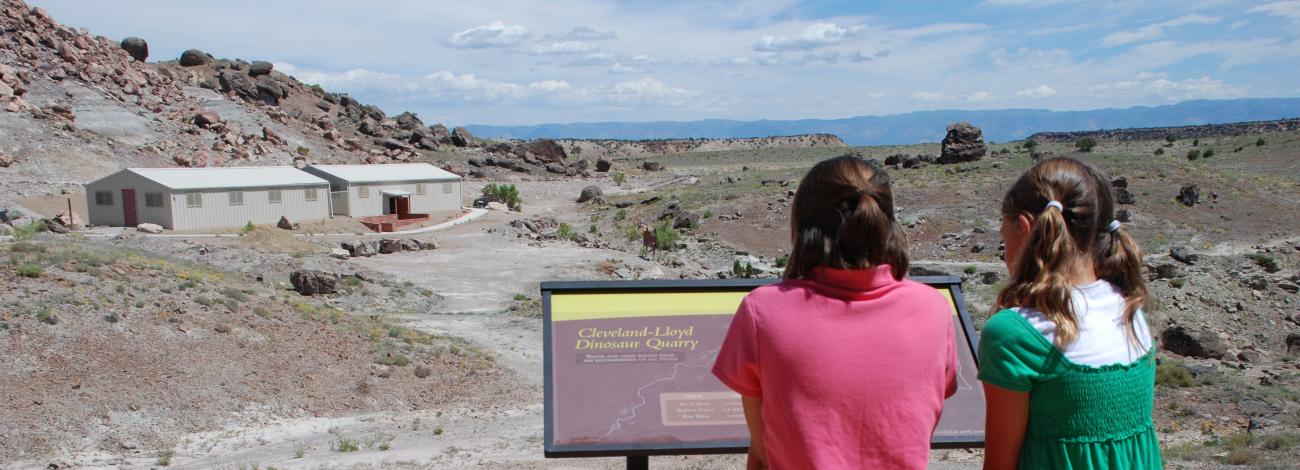
Learn and Explore
The Cleveland-Lloyd Dinosaur Quarry is home to one of the densest concentrations of fossils ever discovered. This unique deposit has fascinated scientists and visitors for decades. Over 12,000 bones have been excavated from the site, and fossils from the quarry are now displayed in over 65 museums worldwide.
At a larger scale, the quarry is part of the Dinosaur Diamond Byway, a scenic driving loop through Utah and Colorado that connects some of the world’s richest dinosaur fossil sites, museums, and prehistoric landmarks, offering a unique journey through Earth's ancient past.
The quarry is also notable for being one of the Bureau of Land Management’s (BLM) preeminent paleontology sites and the agency’s first dedicated visitor center. Originally opened in 1968, the center was renovated and expanded in 2006 to better accommodate research and education.
Scientific Significance
One of the enduring mysteries of the quarry is the overwhelming number of Allosaurus fossils—67% of all bones found in the deposit—compared to those of herbivores like Camarasaurus, Stegosaurus, and Camptosaurus. Adding to the intrigue, no fully articulated skeletons have been found. Instead, bones are scattered and mixed. Scientists have proposed a range of theories to explain these unique characteristics, including that the site may have been a predator trap or the result of a mass die-off event such as a natural disaster.
Allosaurus: Apex Predator of the Jurassic
Allosaurus fragilis was the dominant predator of the Late Jurassic period (approximately 155–145 million years ago). Known for its sharp teeth and small bony crests above its eyes, Allosaurus likely had advanced hunting abilities—and may have hunted in packs.
The Cleveland-Lloyd Quarry has yielded numerous juvenile and adolescent specimens, offering researchers a rare opportunity to study Allosaurus development across life stages.
Early Discoveries and Excavations
The quarry's story began more than a century ago, when local cowboys and shepherds stumbled upon large, blackened bones—clearly not from cattle or sheep. In 1928–29, geologists from the University of Utah conducted the first scientific excavations, recovering about 500 bones.
A major excavation followed in 1939, led by Princeton University, which collected fossils for museum exhibits over a three-year period.
Ongoing Research and Education
In 1960, the University of Utah resumed excavation in collaboration with various universities and museums worldwide. In exchange for funding and support, participating institutions received fossil displays for their collections.
Much of the excavation work was conducted by paleontologist Jim Madsen under the direction of Professor W. Lee Stokes. When researchers returned in 2001, their focus shifted from simply collecting bones to studying the broader context of the deposit—including the surrounding geology, bone orientation, and spatial relationships.
In 2019, Jurassic National Monument was established through the Dingell Act of 2019 to provide access to and protect the paleontological, scientific, educational, and recreational resources of the area. Today, the Natural History Museum of Utah and the Bureau of Land Management continue to collaborate, developing new exhibits and deepening our understanding of this remarkable site.
Educators, the Natural History Museum of Utah created an awesome Research Quest for middle schoolers where students use 3D images of fossils and real data to explore some of the biggest questions paleontologists have asked about the Cleveland Lloyd Dinosaur Quarry. It’s a great way to engage with the resources of this amazing site, anywhere and anytime!
